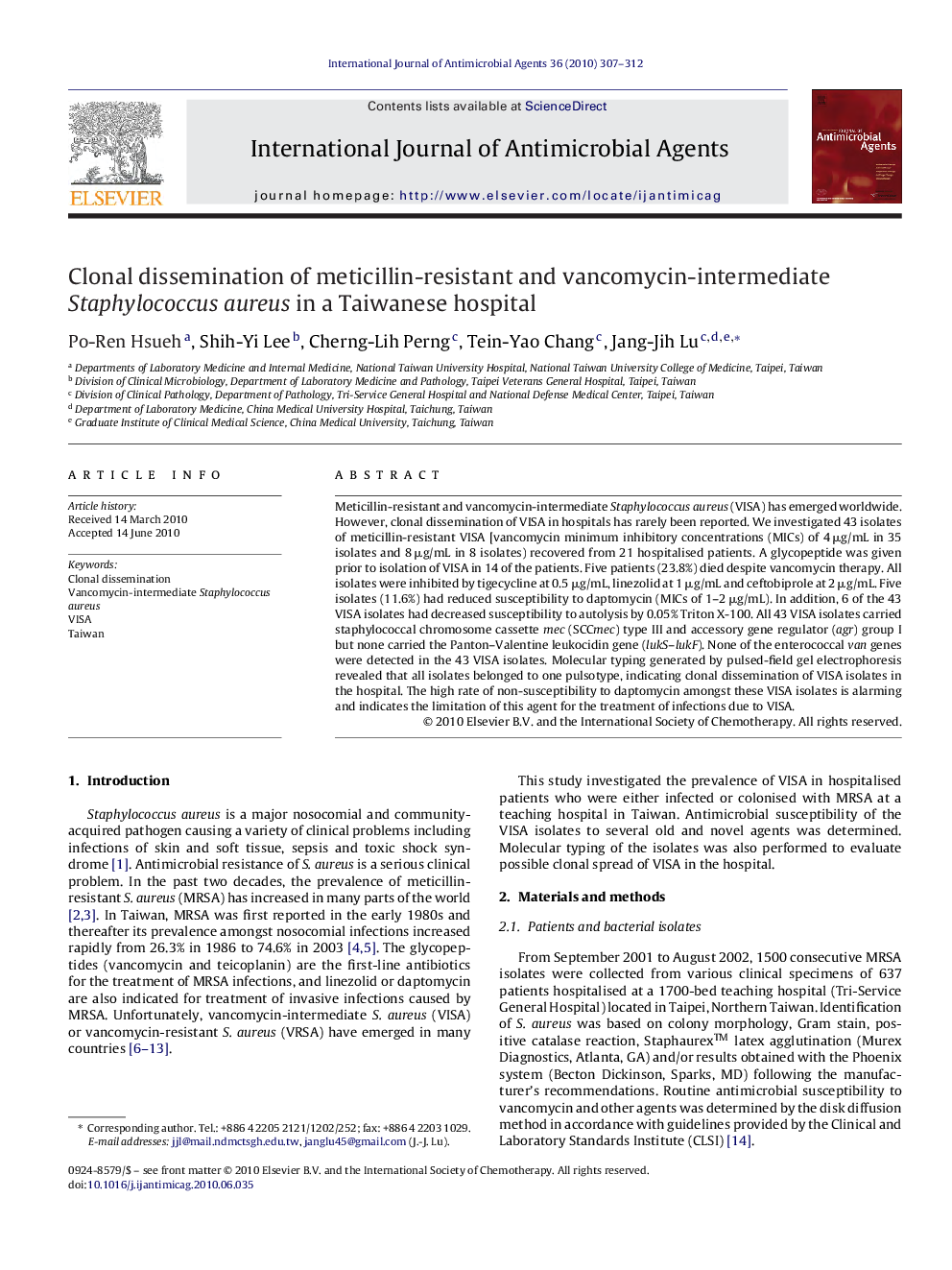| Article ID | Journal | Published Year | Pages | File Type |
|---|---|---|---|---|
| 3359479 | International Journal of Antimicrobial Agents | 2010 | 6 Pages |
Meticillin-resistant and vancomycin-intermediate Staphylococcus aureus (VISA) has emerged worldwide. However, clonal dissemination of VISA in hospitals has rarely been reported. We investigated 43 isolates of meticillin-resistant VISA [vancomycin minimum inhibitory concentrations (MICs) of 4 μg/mL in 35 isolates and 8 μg/mL in 8 isolates) recovered from 21 hospitalised patients. A glycopeptide was given prior to isolation of VISA in 14 of the patients. Five patients (23.8%) died despite vancomycin therapy. All isolates were inhibited by tigecycline at 0.5 μg/mL, linezolid at 1 μg/mL and ceftobiprole at 2 μg/mL. Five isolates (11.6%) had reduced susceptibility to daptomycin (MICs of 1–2 μg/mL). In addition, 6 of the 43 VISA isolates had decreased susceptibility to autolysis by 0.05% Triton X-100. All 43 VISA isolates carried staphylococcal chromosome cassette mec (SCCmec) type III and accessory gene regulator (agr) group I but none carried the Panton–Valentine leukocidin gene (lukS–lukF). None of the enterococcal van genes were detected in the 43 VISA isolates. Molecular typing generated by pulsed-field gel electrophoresis revealed that all isolates belonged to one pulsotype, indicating clonal dissemination of VISA isolates in the hospital. The high rate of non-susceptibility to daptomycin amongst these VISA isolates is alarming and indicates the limitation of this agent for the treatment of infections due to VISA.
